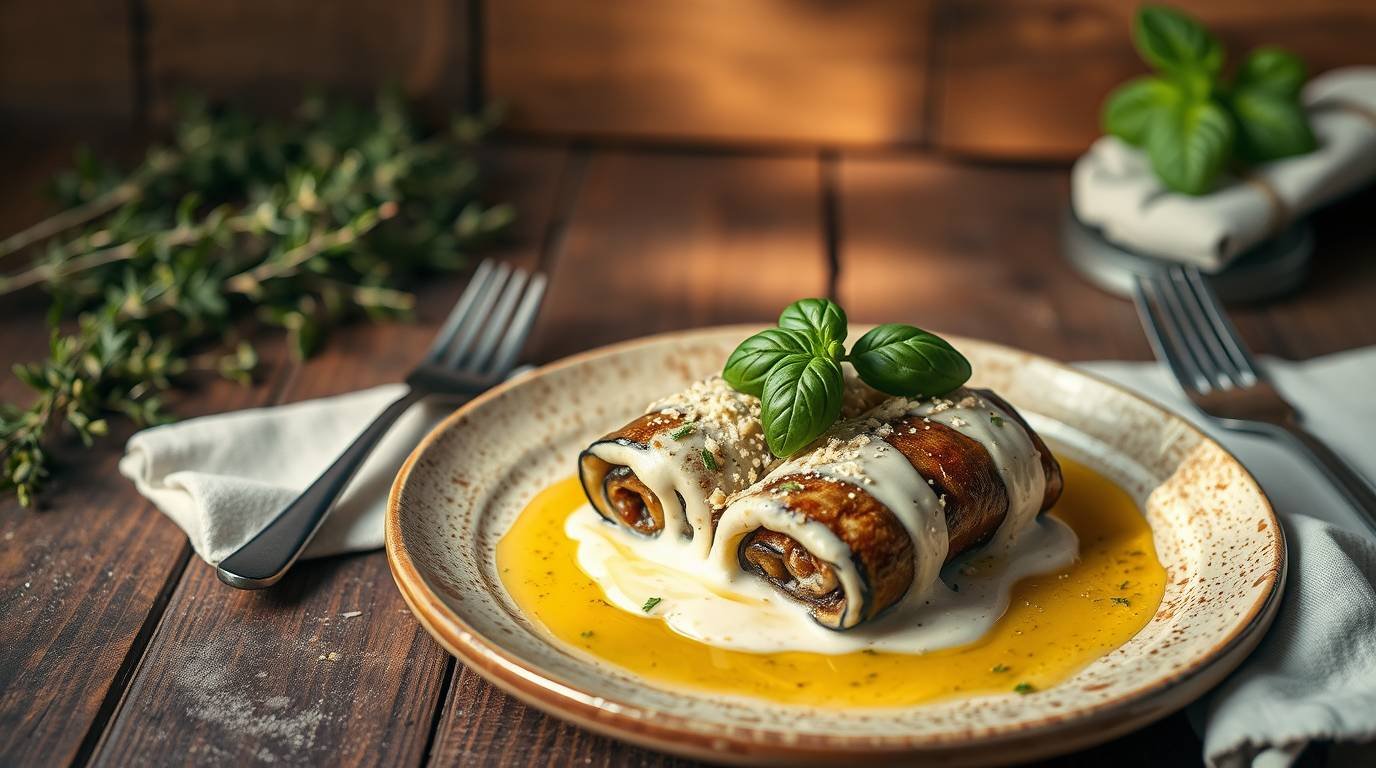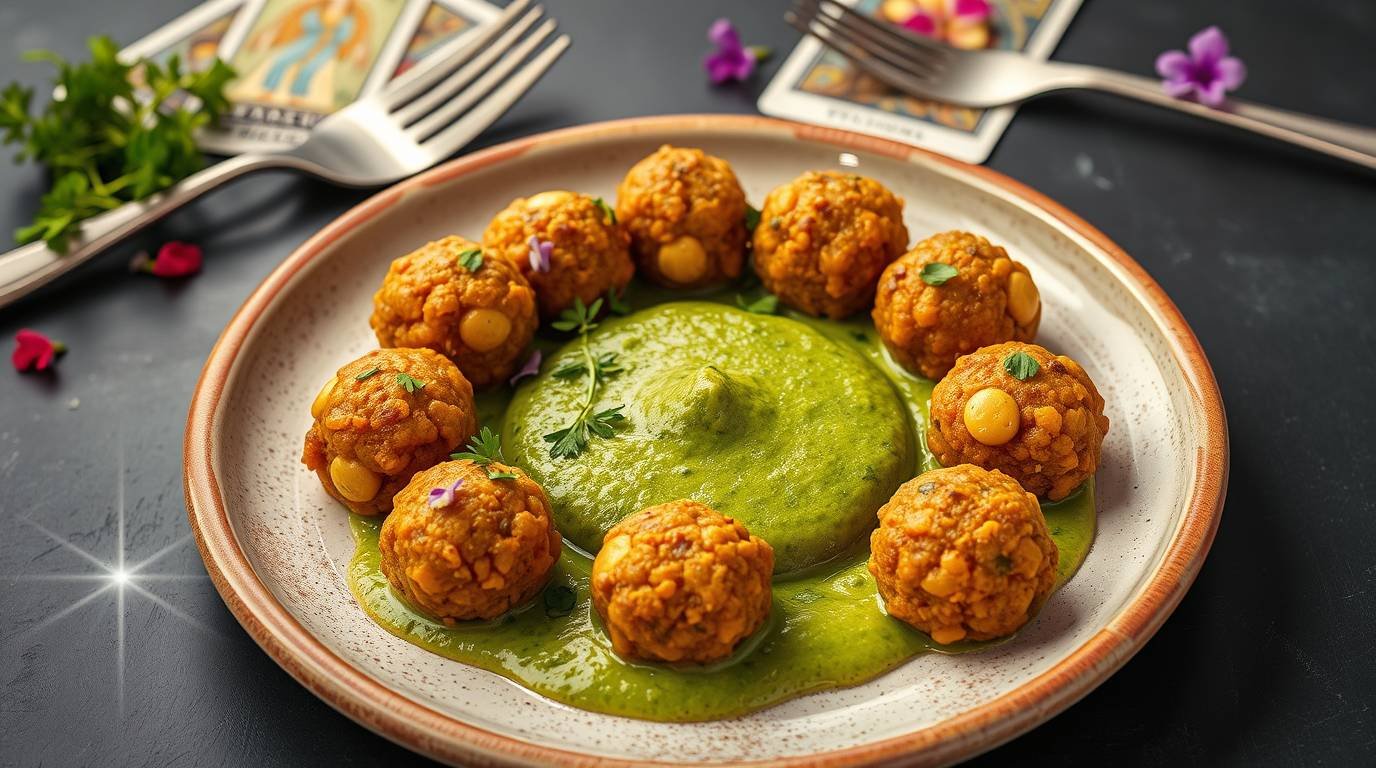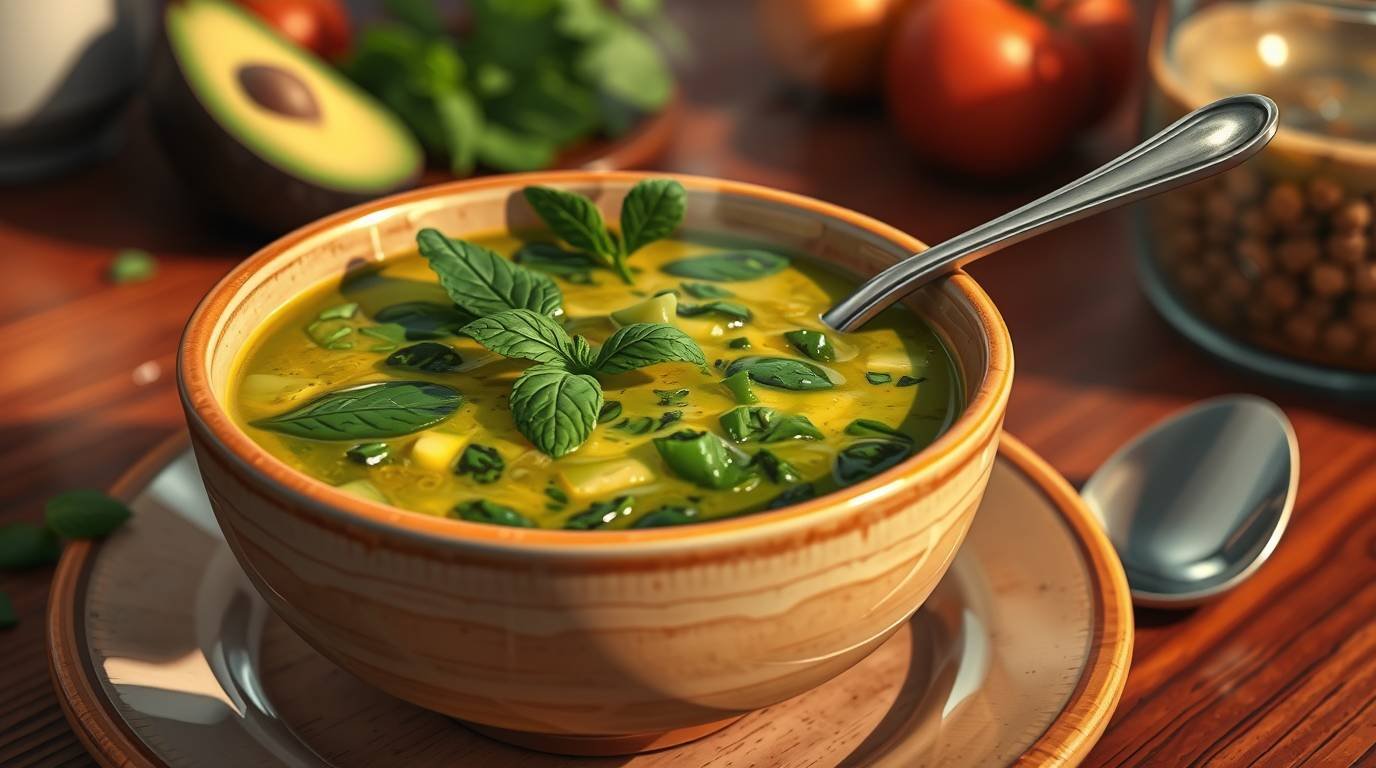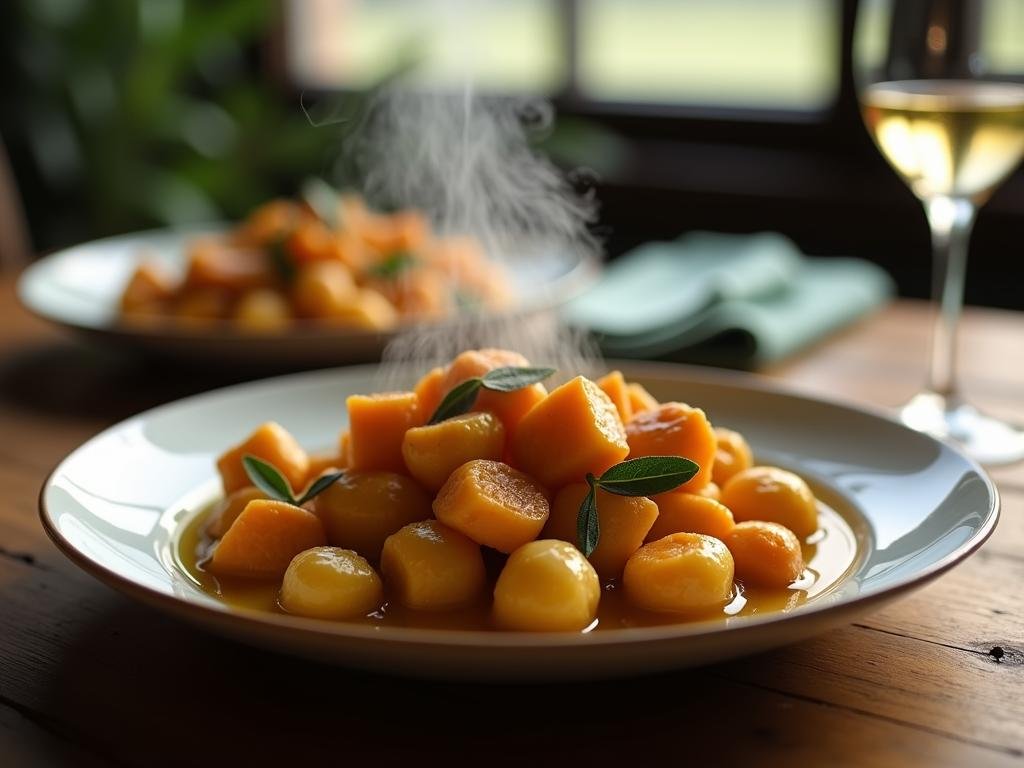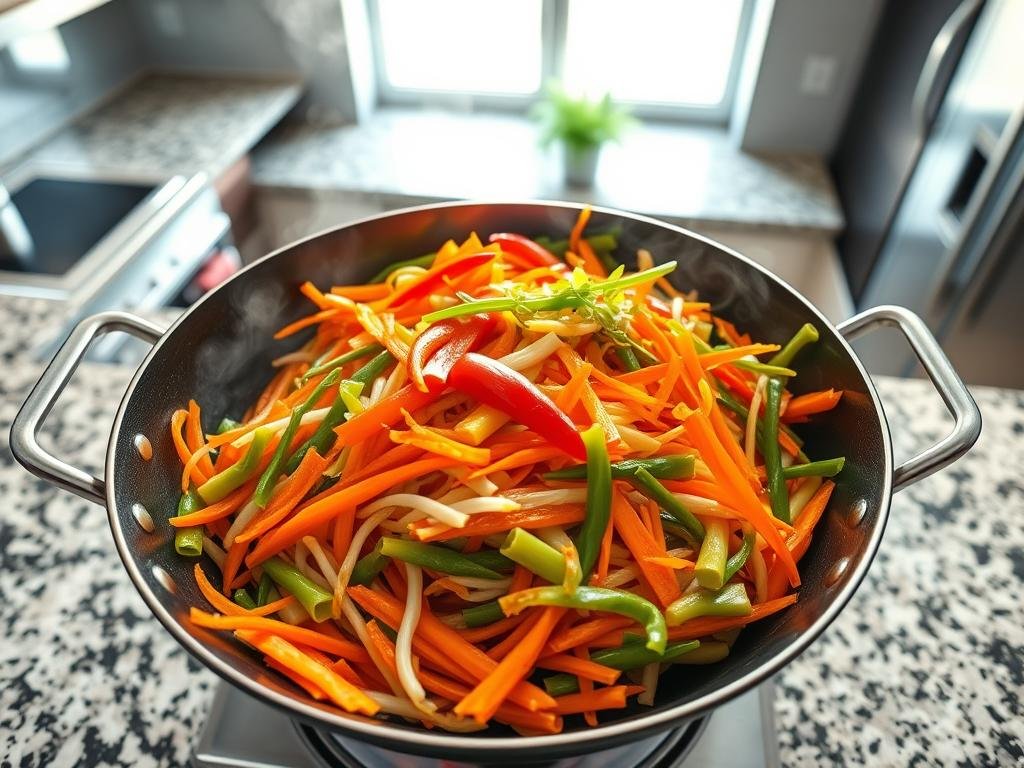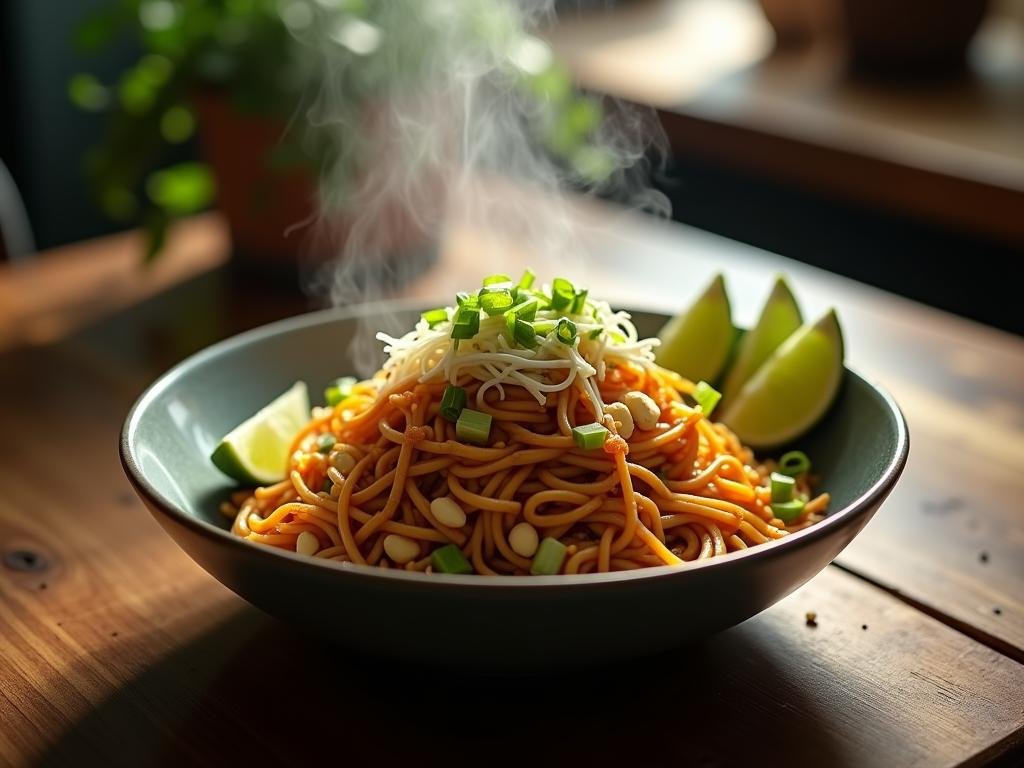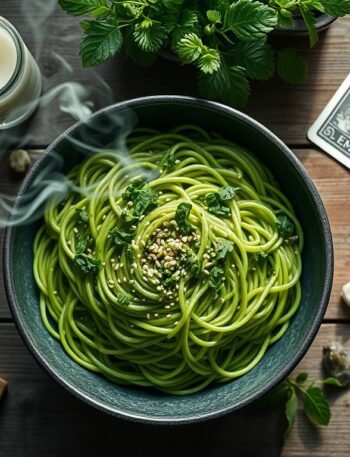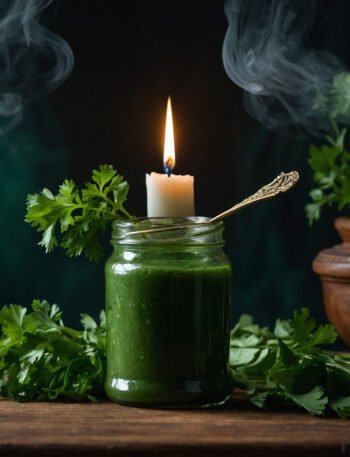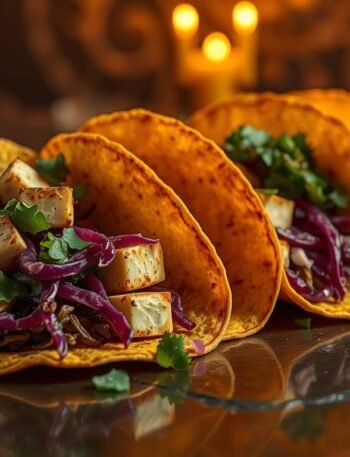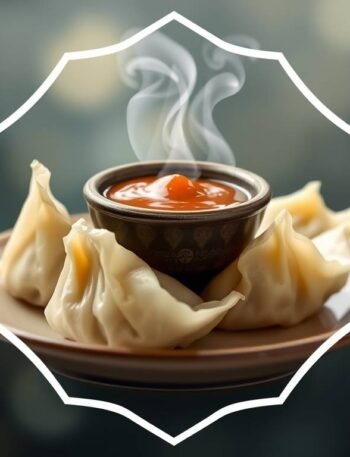Vegetarian Pad Thai


Vegetarian Pad Thai is a vibrant and delicious dish that beautifully marries the bold flavors of Thailand with a medley of fresh vegetables and plant-based proteins.
This stir-fried noodle dish, known for its balance of sweet, sour, salty, and umami notes, is typically crafted with rice noodles, crunchy peanuts, and various colorful veggies.
🌟 Tarot Insight: The Lovers, The Hanged Man, The Magician
-
The Lovers – This card speaks to harmony and the fusion of opposites. Pad Thai is a dish of balance—sweet, salty, tangy, crunchy, and soft. Just as this card represents union and choice, so too does Pad Thai call for the conscious blending of ingredients into something greater than the sum of its parts.
Related Recipes1 hr 30 mins Intermediate1 hr 30 mins Intermediate1 hr 30 mins Beginner1 hr 30 mins Intermediate1 hr 30 mins Intermediate1 hr 30 mins Intermediate1 hr 30 mins Intermediate1 hr 30 mins Beginner -
The Hanged Man – Symbolizing a shift in perspective, this card aligns with the idea of turning a traditionally fish-sauce-laden dish into a vegetarian celebration. There’s sacrifice, yes (no shrimp or eggs), but a beautiful reward: spiritual renewal through mindful eating.
-
The Magician – Manifestation and mastery come alive here. This is a sorcerer’s dish—a kitchen alchemist’s spell. With tamarind, lime, peanuts, and rice noodles, you are wielding all four elemental tools (earth, air, fire, water) in perfect synchronicity.
🃏 Interpretation: Pad Thai represents a moment of conscious choice, a shift to a plant-based path, and a magician’s creative spark. This dish is ideal for days when you seek union between your actions and values, between nourishment and joy.
✨ Magickal Insight
-
Elemental Correspondence:
-
Fire: Stir-frying, chili flakes – vitality, action
-
Water: Tamarind, lime – emotional release, fluid creativity
-
Earth: Peanuts, tofu – grounding, stability
-
Air: Rice noodles – breath, movement, mental clarity
-
-
Spell Use:
-
Serve on Wednesdays for Mercury’s influence—communication, learning, clarity.
-
Whisper your intentions of clarity and balance into the dish as you toss the noodles. Visualize a web of relationships strengthening with each stir.
-
Add a bay leaf or lemongrass stick while cooking to enhance spiritual protection and clarity (remove before serving).
-
🪄 Haiku Spell:
Tamarind dances
Joy hums in lime’s secret kiss—
Balance made sacred.
🧡 Chakra Insight: Solar Plexus & Heart Chakras
-
Solar Plexus (Manipura) – This chakra governs personal power, digestion, and will. The bold, tangy-sweet flavor of Pad Thai lights this chakra like a flame. It encourages confidence, self-expression, and transformation through action.
-
Heart Chakra (Anahata) – The harmony in Pad Thai—how textures and tastes align—soothes the heart. It’s a meal that brings people together, often shared communally, enhancing connection and compassion.
💛 Affirmation:
“With every bite, I awaken my joy and nourish my strength. I am balanced, I am loved, I am radiant.”
Cultural Significance
Pad Thai, often regarded as Thailand’s national dish, has a fascinating history that reflects the country’s culinary evolution. It gained prominence during World War II as a means to promote rice consumption and to create a national identity around a beloved dish. The recipe was standardized and popularized by the Thai government, which encouraged street vendors to serve this delicious and affordable meal. Today, Pad Thai stands as a symbol of Thai cuisine, encapsulating the country’s rich heritage and the blend of various culinary influences, particularly from Chinese stir-fry traditions.
The beauty of Vegetarian Pad Thai lies in its accessibility; it can be enjoyed as street food from bustling markets in Bangkok or savored in a cozy home kitchen. The dish represents a harmonious blend of flavors and textures, showcasing the skillful balance that Thai cuisine is known for. Each bite transports you to the vibrant streets of Thailand, where the aromas of sizzling garlic, tamarind, and fresh herbs waft through the air, inviting you to indulge in a true culinary adventure.
Unique Ingredients and Flavors
At the heart of any great Pad Thai is the combination of fresh ingredients that create a symphony of flavors. The rice noodles, often used as the foundation, provide a chewy texture that soaks up the delicious sauce. While the traditional recipe typically includes shrimp or chicken, the vegetarian version embraces a variety of colorful vegetables such as bell peppers, carrots, bean sprouts, and scallions, bringing a delightful crunch and freshness to each forkful.
The sauce is where the magic truly happens. Tamarind paste, a key ingredient, lends a tangy sweetness that is quintessential to Pad Thai. Paired with soy sauce, a hint of sugar, and lime juice, the sauce creates a rich, glossy coating for the noodles that is utterly irresistible. The addition of crushed peanuts not only provides a nutty flavor but also adds a satisfying crunch, transforming each bite into a layered experience. Fresh cilantro and lime wedges serve as the final touch, elevating the dish with bright herbal notes and zesty brightness.
Cooking Techniques
The cooking technique for Vegetarian Pad Thai is as important as the ingredients themselves. Stir-frying over high heat ensures that the noodles are cooked perfectly while retaining their delightful chewiness. It’s essential to have all your ingredients prepped and ready before you start cooking, as the process moves quickly. A well-seasoned wok or a large skillet works best, allowing for even heat distribution and helping achieve that coveted smoky flavor, known as “wok hei.”
One insider tip to enhance the dish’s depth is to lightly toast the peanuts and any spices before adding them to the stir-fry. This simple step unlocks a world of flavor, accentuating the nutty characteristics and infusing the dish with warmth. The careful balance of timing and heat is crucial; overcooking the vegetables can lead to a soggy texture, while undercooking can leave them too crunchy.
Vegetarian Pad Thai is not just a meal; it’s an experience that invites endless creativity. Whether you choose to add tofu for extra protein, experiment with different vegetables, or adjust the seasoning to your taste, this dish is a canvas for your culinary artistry. Each time you prepare it, you have the opportunity to make it uniquely yours, allowing for personal flair and experimentation. As you embark on this cooking journey, remember that the joy of preparing and sharing this beloved dish is as rewarding as the final result itself.
Feed Your Energy CentersVegetarian Pad Thai
Description
This Vegetarian Pad Thai combines stir-fried rice noodles with colorful vegetables and a zesty sauce, making it a perfect dish for a quick weeknight dinner or a cozy weekend feast.
Ingredients
Vegetarian Pad Thai Ingredients
Instructions
Preparing the Noodles
-
Soak the Rice Noodles
In a large bowl, soak 8 ounces of rice noodles in warm water for about 30 minutes, or until they're soft but still firm to the bite. Drain and set aside.Make sure to not over-soak the noodles as they will continue to cook in the pan.
Cooking the Vegetables
-
Sauté the Aromatics
In a large skillet or wok, heat 2 tablespoons of vegetable oil over medium-high heat. Add 3 minced garlic cloves and 1 small diced onion; sauté for 2-3 minutes until fragrant and translucent.Feel free to add a pinch of salt to help the onions sweat faster. -
Add the Vegetables
Toss in 1 cup of shredded carrots, 1 cup of bean sprouts, and ½ cup of sliced bell peppers. Stir-fry for about 5 minutes until they are tender yet still crisp.You can customize the veggies based on what you have—zucchini or snap peas work great too!
Bringing It All Together
-
Combine Noodles and Sauce
Add the drained noodles to the skillet along with the sauce made from 3 tablespoons of soy sauce, 1 tablespoon of tamarind paste, 1 tablespoon of sugar, and a splash of lime juice. Toss everything together and cook for an additional 2-3 minutes until well combined.If the mixture looks dry, add a few tablespoons of water or vegetable broth to help it along. -
Finish with Toppings
Remove from heat and stir in ¼ cup of chopped green onions and ¼ cup of chopped peanuts. Serve hot, garnished with fresh lime wedges and more bean sprouts on top.For a spicy kick, add a sprinkle of chili flakes or serve with Sriracha on the side.
Nutrition Facts
Servings 4
- Amount Per Serving
- Calories 511kcal
- % Daily Value *
- Total Fat 31g48%
- Saturated Fat 7g35%
- Cholesterol 503mg168%
- Sodium 949mg40%
- Potassium 682mg20%
- Total Carbohydrate 36g12%
- Dietary Fiber 5g20%
- Sugars 10g
- Protein 28g57%
- Vitamin A 338 IU
- Vitamin C 18 mg
- Calcium 18 mg
- Iron 23 mg
* Percent Daily Values are based on a 2,000 calorie diet. Your daily value may be higher or lower depending on your calorie needs.
Note
- Use rice noodles that are specifically labeled for Pad Thai or stir-fry to achieve the best texture.
- Soak the noodles in hot water for about 20-30 minutes instead of boiling them; this prevents them from becoming too soft.
- For protein, consider adding tofu; firm tofu works best. Press and cube it, then pan-fry until golden for added texture and flavor.
- Use tamarind paste for an authentic sweet-sour flavor, but if unavailable, a mix of lime juice and brown sugar can work as a substitute.
- Toast the peanuts before chopping to enhance their flavor and aroma.
- Fresh lime juice is essential; it adds brightness to the dish, so don’t skip it.
- Customize with seasonal vegetables like bell peppers, bok choy, or snap peas for added color and nutrition.
- If you prefer a spicier dish, add fresh chili or a dash of chili powder while cooking.
- Garnish with fresh herbs such as cilantro or green onions for freshness.
- Store leftovers in an airtight container in the fridge for up to 2 days. Reheat gently to avoid overcooking the noodles.
- Pair with a light cucumber salad or spring rolls for a complete meal.
Bringing It All Together
Embracing the Essence of Pad Thai
As you savor each bite of your homemade Vegetarian Pad Thai, take a moment to appreciate the harmonious blend of sweet, salty, and tangy flavors. The tender rice noodles, vibrant vegetables, and the crunch of crushed peanuts create a delightful symphony in your mouth. This dish isn't just about nourishment; it's about the experience—the way the aromas dance in the air, transporting you to the bustling streets of Bangkok. I fondly remember my first attempt at this recipe, where my friends gathered around the table, eagerly waiting to taste my creation. Their smiles and laughter filled the room, making it a cherished memory.
Serving Suggestions and Variations
For an extra flourish, consider garnishing your Pad Thai with a sprinkle of fresh cilantro or a wedge of lime for that zesty kick. You can easily customize this dish to suit your palate—add tofu for protein, swap in seasonal veggies, or even experiment with different sauces to create your signature twist. If you find yourself with leftovers, store them in an airtight container in the fridge. They should keep well for up to three days, making for a quick and satisfying lunch option.
Join the Adventure!
Now, it’s your turn to dive into this culinary adventure! I encourage you to try this recipe and make it your own. Don't hesitate to share your thoughts, variations, or any questions you may have in the comments below. Cooking is a journey best shared, and I can’t wait to hear about your experiences. Let’s create a vibrant cooking community together—one delicious dish at a time!
Tag tarot_mistical_lab/ if you made this recipe.
Frequently Asked Questions
Can I substitute tofu with another protein?
Absolutely! You can use tempeh, seitan, or even chickpeas for a different texture and flavor.
How can I make this dish gluten-free?
Use gluten-free rice noodles and ensure that your soy sauce is gluten-free as well.
What vegetables work best in Vegetarian Pad Thai?
You can use bell peppers, carrots, bean sprouts, and zucchini. Feel free to mix and match based on your preference!
Can I make this dish ahead of time?
Yes, you can prep the ingredients ahead of time. Just cook the noodles and sauce fresh before serving for the best texture.
What can I serve with Vegetarian Pad Thai?
Serve it with lime wedges, crushed peanuts, and fresh cilantro on top for extra flavor and crunch.
Hello, beautiful people! I am Marco DeLuca, Mystic Chef.
Master Chef • Tarot Grandmaster • Rune Caster
Crafting recipes that blend magick, flavor, and soul.
You may also like...


Crispy Tofu Tacos with Black Beans & Kimchi Slaw: A Vegan Korean Fusion


Fresh, crunchy, and oven‑baked—Japanese‑Mexican fusion




